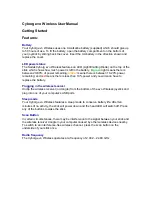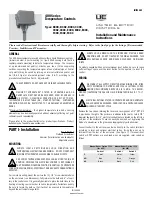
45
Chapter 3:
Communicating by DeviceNet
This chapter explains how to add a D8 series controller to a DeviceNet™ network and how to
access and manipulate the controller’s data over a network using a Programmable Logic Controller
or other device with a DeviceNet™ scanner. The chapter also includes descriptions of the D8’s
objects and attributes that are accessible via the DeviceNet™ protocol.
Accessing Data with a DeviceNet Master
Figures 3.1 to 3.4 starting on page 51 illustrate the inputs and outputs in the D8 controller’s polled
I/O messages. These messages are typically used to get the controller’s data in and out of a master
on a DeviceNet™ network.
About The Electronic Data Sheet (EDS)
The EDS file allows for faster and easier configuration with the network software, but it is not
required to make the device work. EDS files for the D8 are available on the Watlow web site and
upon request from Watlow technical support.
NOTE!
There are several versions of the EDS file. You must use the correct file for the
number of loops in the controller (d84 <file version>.eds or d88 <file version>.eds) and
the version of the DeviceNet™ BIOS. This information is included in the file description on
Watlow’s web site.
Setting Parameters via DeviceNet
All values stored in the D8 are bits, integers or strings. Some integers represent settings that appear
as text in the controller interface. Some integers represent numeric settings. This section describes
how to interpret values found in the DeviceNet™ objects.
Non-Numeric Settings
With the exceptions of the Loop Name and Units parameters, when the controller interface displays
the setting as a word—a phrase and in some cases a number—the setting is stored as an integer.
See Chapter 6: Menu and Parameter Reference on page 95. for the parameter information. The
integer value appears in parentheses following each option. Use that integer value when you set or
interpret the value of the parameter via DeviceNet™.
















































